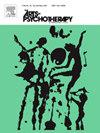‘Go with the "wave of music" to dive deep’: Exploring perceptions of psychedelic-assisted therapy and the role of music within this practice
IF 1.5
3区 心理学
Q3 PSYCHOLOGY, CLINICAL
引用次数: 0
Abstract
There is increasing interest in psychedelic-assisted therapy (PT) as a mental health intervention; however, there is a long history of stigma associated with psychedelics, which may be a barrier to implementation. For this reason, it is important to examine the acceptability and perceptions of PT among mental health professionals, service users and the wider public. In almost all PT research carried out to date, music listening is used as an essential adjunct to support the therapeutic aims, such as having a ‘peak experience’ and emotional release, however existing research has not addressed the perceptions of the role of music in PT. This qualitative study used a novel hybrid vignette-story completion method to explore understandings of PT and the role of music in the practice. Reflexive thematic analysis was used to develop three themes: (1) ‘Psychedelic therapy can reach the parts that other therapies cannot reach’; (2) ‘Music as a guide’; and (3) ‘It’s no magic bullet’: the potential risks of PT. The analysis highlights the important role that music is perceived to play in the practice of PT, positive perceptions of PT as a mental health intervention, alongside concerns about potential risks.
“随着‘音乐的浪潮’深入”:探索迷幻辅助疗法的认知以及音乐在这种实践中的作用
有越来越多的兴趣迷幻辅助治疗(PT)作为一种心理健康干预;然而,与迷幻药相关的耻辱由来已久,这可能是实施迷幻药的障碍。因此,重要的是要检查心理健康专业人员、服务使用者和广大公众对PT的接受程度和看法。在迄今为止进行的几乎所有PT研究中,音乐聆听被用作支持治疗目标的必要辅助手段,例如获得“高峰体验”和情绪释放,然而现有的研究并没有解决音乐在PT中的作用。本定性研究使用了一种新颖的混合小插曲-故事完成方法来探索对PT和音乐在实践中的作用的理解。运用反身性主题分析,得出三个主题:(1)“迷幻疗法可以达到其他疗法无法达到的部分”;(2)“以音乐为向导”;(3)“没有灵丹妙药”:体育锻炼的潜在风险。分析强调了音乐在体育锻炼中所起的重要作用,人们对体育锻炼作为一种心理健康干预手段的积极看法,以及对潜在风险的担忧。
本文章由计算机程序翻译,如有差异,请以英文原文为准。
求助全文
约1分钟内获得全文
求助全文
来源期刊

Arts in Psychotherapy
Multiple-
CiteScore
3.20
自引率
11.10%
发文量
66
期刊介绍:
The Arts in Psychotherapy is a dynamic, contemporary journal publishing evidence-based research, expert opinion, theoretical positions, and case material on a wide range of topics intersecting the fields of mental health and creative arts therapies. It is an international peer-reviewed journal publishing 5 issues annually. Papers are welcomed from researchers and practitioners in the fields of art, dance/movement, drama, music, and poetry psychotherapy, as well as expressive and creative arts therapy, neuroscience, psychiatry, education, allied health, and psychology that aim to engage high level theoretical concepts with the rigor of professional practice. The journal welcomes contributions that present new and emergent knowledge about the role of the arts in healthcare, and engage a critical discourse relevant to an international readership that can inform the development of new services and the refinement of existing policies and practices. There is no restriction on research methods and review papers are welcome. From time to time the journal publishes special issues on topics warranting a distinctive focus relevant to the stated goals and scope of the publication.
 求助内容:
求助内容: 应助结果提醒方式:
应助结果提醒方式:


